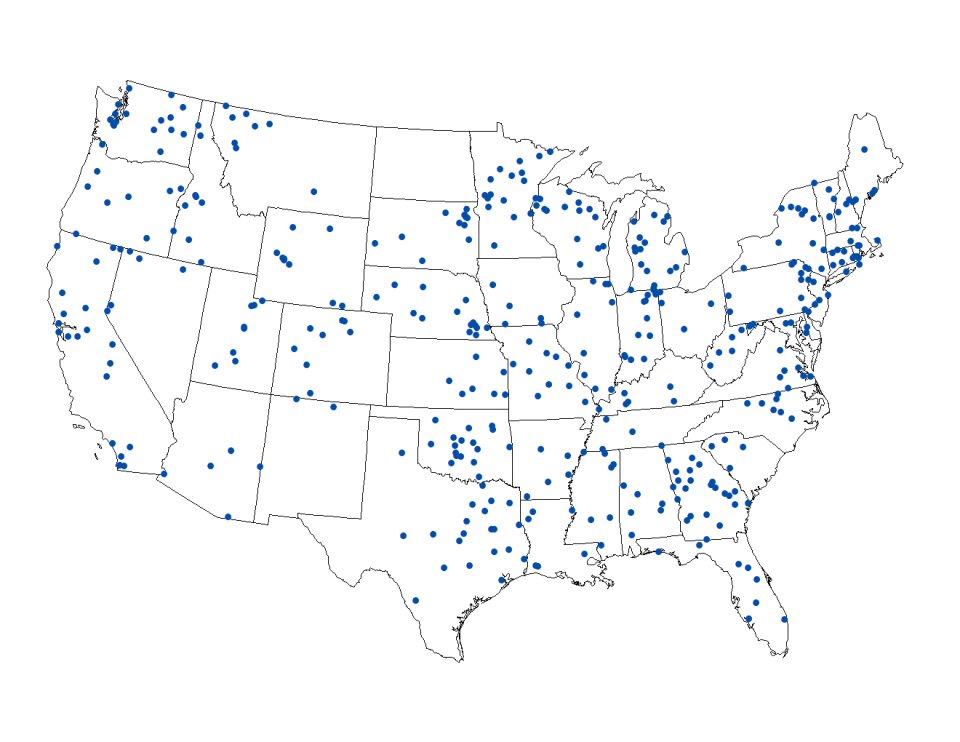2022 National Lakes Assessment - Fish Tissue Study
The National Lakes Assessment (NLA) is a collaboration among the U.S. Environmental Protection Agency, states, Tribes and other partners. It is part of the National Aquatic Resource Surveys (NARS) program designed to conduct national scale assessments of aquatic resources. As part of the 2022 NLA, the EPA conducted a study of contamination in fish from lakes to determine whether eating lake fish poses risks to human health. The 2022 NLA involved collection of recreationally caught fish species from randomly selected lakes, targeting approximately two-thirds of the lakes (413 of 636 total lakes), and analysis of fillet (muscle) tissue for a variety of chemicals to evaluate the potential health impacts for people who eat fish. The Fish Tissue Sample Analysis section contains the full list of compounds and lipids for this study.
On this page:
- Sampling Design
- Fish Sample Collection
- Fillet Tissue Sample Preparation
- Fillet Tissue Sample Analysis
- Results and Data
Sampling Design
A subset of the lakes selected using the survey design were targeted to have fish sampled for the analysis of fish tissue contaminants. The subsample was approximately two-thirds of the base lakes (636 lakes) included in the NLA 2022 survey design. Each lake had a surface area >1 hectare and contained at least 1,000 square meters of open, unvegetated water and a permanent population of predator fish species. Approximately 50% of the lakes were from the subsample of NLA 2017 lakes and 50% from new lakes selected for 2022.

Fish Sample Collection
In total, field crews collected fish samples from 413 of the 636 designated lakes in the lower 48 states. The fish samples collected for fillet tissue analysis consisted of a composite of predator fish specimens from each site. A routine fish composite sample consisted of five fish that met the following criteria:
- All fish in the composite sample are of the same species and are collected at the same time.
- The fish species in the composite sample is sufficiently abundant within the lake and is commonly caught and consumed by people.
- All fish in the composite sample either meet legal requirements of harvestable size or are of consumable size if there were no harvestable size limits.
- All fish in the composite sample at least 190 mm in length and of similar size so that the smallest fish in the composite is not less than 75% of the total length of the largest fish in the composite sample.
Various species of fish were collected for the 2022 National Lakes Assessment Human Health Fish Fillet Tissue Study. The most frequently caught species was Largemouth Bass, which accounted for 66% of the fish composite samples collected for this study, followed by Rainbow Trout (5.8%), Bluegill (3.6%), Yellow Perch (3.4%) and Black Crappie (3.2%).
Fillet Tissue Sample Preparation
Field crews shipped whole fish samples collected for the 2022 National Lakes Assessment Human Health Fish Tissue Study to a laboratory designated by EPA for preparation of fillet tissue composite samples. Experienced laboratory staff filleted the fish (removing scales but retaining the skin and the belly flap on each fillet) and homogenized the fillet tissue in a strictly controlled environment to avoid contaminating the fish tissue samples. The homogenized fillet composite samples were divided into aliquots containing adequate tissue for each type of chemical analysis before being shipped to laboratories under contract to EPA for analysis of the target chemical contaminants and fatty acids included in the study.
Fillet Tissue Sample Analysis
Laboratories analyzed the 2022 NLA fillet tissue samples for the following chemicals:
- Mercury (total)
- Per- and polyfluoroalkyl substances or PFAS (40 compounds)
- Polychlorinated biphenyls or PCBs (all 209 congeners)
- Lipid content (reported as percent lipids)
Laboratories used the following chemical-specific methods for analysis of the 2020 Great Lakes Human Health Fish Fillet Tissue Study fillet samples:
- Mercury: EPA Method 1631E, Mercury in Water by Oxidation, Purge and Trap, and Cold Vapor Atomic Fluorescence Spectrometry, EPA 821-R-02-019, August 2002.
- PFAS: EPA Method 1633, Analysis of Per- and Polyfluoroalkyl Substances (PFAS) in Aqueous, Solid, Biosolids, and Tissue Samples by LC-MS/MS. EPA-821-R-02-019. August 2002
- PCBs: EPA Method 1668C, Chlorinated Biphenyl Congeners in Water, Soil, Sediment, Biosolids, and Tissue by High Resolution Gas Chromatography/High Resolution Mass Spectrometry (HRGC/HRMS), EPA 820-R-10-005, April 2010.
- Lipids: The lipids were determined by a gravimetric method, which involved solvent extraction followed by evaporating the solvent, weighing the residue, and subtracting the tare weight of the evaporation vessel.
Results and Data
All results for the fillet tissue concentrations are reported on a wet weight basis. All the fish fillet samples analyzed contained detectable levels of mercury, PCBs and PFAS. Analytical and field sampling data for each 2022 NLA Human Health Fish Fillet Tissue Study chemical contaminant are provided, along with a data dictionary that describes the contents of each data file, a quality assurance report, the quality assurance project plans for the study, and a link to the 2022 NLA online report and technical support document.
- Mercury Data (xlsx)
- PFAS Data (xlsx)
- PCB Congeners Data (xlsx)
- Lipid Content Data (xlsx)
- Data Dictionary – Mercury, PFAS and PCB Congeners (pdf)
- Quality Assurance Report (pdf)
- Quality Assurance Project Plan for Sample Preparation (pdf)
- Quality Assurance Project Plan for Sample Analysis (pdf)
- National Lakes Assessment 2022 Final Report and Technical Support Document
For further assistance with this study, contact John Healey (healey.john@epa.gov).
